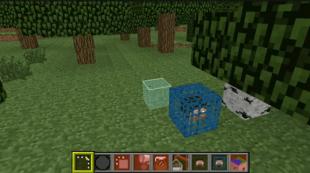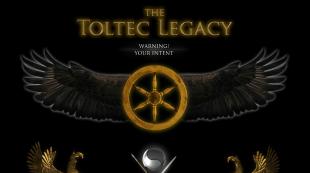Ege in English trial and real. USE in English. Reading. Dates of the exam in English
USE 2017. English. 30 training options for examination papers. Muzlanova E.S.

M .: 20 1 6. - 400 p.
A manual is offered to the attention of schoolchildren and applicants, which allows them to successfully prepare for the passing of the unified state examination in the shortest possible time. English language... The options presented include all the topics provided for by the USE codifier in English. Each block contains sections "Listening", "Reading", "Grammar and vocabulary", "Writing", which included examination tasks of all types and exercises for practicing the necessary skills. The collection contains 30 full-fledged training options corresponding to the parameters of the exam, texts for listening and keys-answers to tasks.
Format: pdf
The size: 7.5 MB
Watch, download: drive.google ; Rghost
CONTENT
Foreword 4
Option 1 5
Option 2 13
Option 3 21
Option 4 29
Option 5 37
Option 6 45
Option 7 53
Option 8 61
Option 9 69
Option 10 77
Option 11 85
Option 12 93
Option 13 101
Option 14 109
Option 15 117
Option 16 125
Option 17 133
Option 18 141
Option 19 149
Option 20 157
Option 21 165
Option 22 173
Option 23 181
Option 24 190
Option 25 201
Option 26 207
Option 27 215
Option 28 223
Option 29 231
Option 30 240
Option 31 248
Appendix 1. Section "Speaking" 256
Appendix 2. Texts for listening. 258
Appendix 3. Answers to tasks 351
Appendix 4. What is KIM USE: structure and content 391
Appendix 5. Criteria and schemes
assessment of assignments
section "Letter" 392
Appendix 6. Word counting order
in the tasks of the "Letter" section 395
Appendix 7. Procedure for determination
percentage of textual matches
in task 40 395
Sample Exam Forms 396
Literature 398
The purpose of this manual is to help students in grades 10-11 and applicants as soon as possible prepare for the final certification in English in the form of a unified state examination (USE). It can also be useful for teachers who will find in it the necessary material to work in the classroom.
The collection contains training options for the written part of the examination paper, which can be used as practical material for preparing for the exam. The manual is focused on adaptation to test control technologies, taking into account their new format and content.
Test options are identical to the CMM (test and measurement options) USE in English and consist of four sections (Listening, Reading, Grammar and Vocabulary, Writing), which include 40 tasks.
The purpose of the manual is to help students in grades 10-11 and applicants as soon as possible prepare for the final certification in English in the form of a unified state exam.
The collection contains training options for examination papers that can be used as practical material for preparing for the exam. Each version is provided with keys and listening texts.
Examples.
The narrator considers himself to be an artist because
1) he can draw a straighter line and a truer circle.
2) he gets lots of messages from other people.
3) he can speak to people more truthfully.
4) he is able to convey his ideas better than other people.
The narrator’s manner of painting
1) is similar to Monet's.
2) is like Dante Gabriel Rossetti's.
3) comes from Liechtenstein and Warhol.
4) is constantly changing.
The narrator doesn’t want to go to school because
1) he prefers to study on his own.
2) he doesn't like some subjects.
3) he is bullied at school.
4) he is scared to go there.
CONTENT
Foreword
Option 1
Option 2
Option 3
Option 4
Option 5
Option 6
Option 7
Option 8
Option 9
Option 10
Option 11
Option 12
Option 13
Option 14
Option 15
Option 16
Option 17
Option 18
Option 19
Option 20
Option 21
Option 22
Option 23
Option 24
Option 25
Option 26
Option 27
Option 28
Option 29
Option 30
Option 31
Appendix 1. Section "Speaking"
Appendix 2. Texts for listening
Appendix 3. Answers to tasks
Appendix 4. What is KIM USE: structure and content
Appendix 5. Criteria and schemes for assessing the performance of tasks in the "Letter" section
Appendix 6. The order of counting words in the tasks of the "Letter" section
Appendix 7. The procedure for determining the percentage of textual matches in the task 40
Sample Exam Forms
Literature.
Free download e-book in a convenient format, watch and read:
Download the book USE 2017, English, 30 training options, Muzlanova E.S., 2016 - fileskachat.com, fast and free download.
- English language, Express tutor to prepare for the exam, Reading, Muzlanova E.S., 2010
- Unified State Exam-2019, English, 10 training options for examination papers to prepare for the unified state exam, Muzlanova E.S., 2018
- Unified State Exam 2020, English, 10 training options for examination papers to prepare for the unified state exam, Muzlanova E.S., 2019
Have you ever tasted saltwater? I guess you have and if so, you will agree with me that it’s not very refreshing. In fact, drinking more than a few cups worth can kill you.
According to the United States Geological Survey, whose mission is to collect and disseminate reliable, impartial, and timely information that is needed to understand the nation’s water resources, about ninety-seven percent of the water on our planet is saltwater; the rest is stored in lakes, rivers, glaciers and aquifers underground. Moreover, only about one-third of the world’s potential fresh water can be used for human needs. As pollution increases, the amount of usable water decreases.
Water is the most precious and taken-for-granted resource we have on Earth. It is also one of the most threatened resources. Increased population and possible climate change will put more and more strain on supplies of this vital resource as time goes on. What could we do in this situation? Though it may seem like science fiction, the solution could lie in outer space.
I'm not saying we’re going to be teleporting to a spring on the other side of the galaxy or colonizing another planet just to have longer showers - it’s much more mundane than that. What we could achieve realistically in this century is the successful use of the solar system's rare metals and water, barring the invention of the matrix.
You may be surprised to learn that the metal in your keys, coins, cell phone, computer, car and everywhere else, originally came to this planet from space. When Earth formed, the heavy metals sank to the center and formed a solid core. The lighter elements formed the mantle and the crust we live on. Asteroids and comets that struck the Earth brought water and metals to the surface.
There are thousands of asteroids orbiting near Earth. Most asteroids are made of rock, but some are composed of metal, mostly nickel and iron. Probes could be sent out to these to identify useful ones. Then larger probes could push them towards the Earth where they can be handled in orbit.
In order to fuel ships and probes, we simply need to find a source of water, such as a comet or the surface of the moon. We collect the water and pass an electric current through it from a solar panel. The water separates into oxygen and hydrogen, which in liquid form is a powerful rocket fuel.
Is this really possible? We may soon find out. Private company SpaceX has already started delivering equipment to the International Space Station (ISS).
The ISS is proof that countries once at each other’s throats, like America and Russia, can work together and pull off multi-billion dollar projects.
Recently, a company called Planetary Resources Inc. made the news for getting big names like Google and Microsoft to invest in exploring asteroids for material gain. Although it will take many decades, it is wise to put the gears in motion now.
We've already landed probes on the surface of asteroids and taken samples from them. We can put something as large as the ISS, which weighs just short of 500 tons, according to National Aeronautics and Space Administration (NASA), in orbit.
We can make a half-million-mile round-trip to get rocks from the moon. We can do all of these things already. They just need to be applied and developed in a smart way.
Today, the most popular language for passing the exam consider English. In the USE 2017, a number of changes have been made. Even if you are confident in your abilities, you need to pass the USE in English 2016. Online tests this year have four sections consisting of forty assignments. The USE test has a maximum time to pass. In 2017, it is 3 hours. To overcome the entrance barrier, you must successfully pass 17 assignments. Get ready for questions with listening, reading, grammar, vocabulary and reading. Preparation for such a test should be colossal. Every year, there is less and less chance of luck. Without knowledge, in a certain area, it is impossible to pass it. This test will help you assess your level for passing the exam.
USE test in English language
Question 1 of 20
She thinks she… responsible. She has never got on well with her ... friends.
Rebecca was used to… because she was very shy and used to… very awkward sometimes.
Mr. Stone, who seemed… about his breakfast,… to Lima in surprise.
This island is known ... by ...
It is a chance ..., so they must make a list of things ...
They ... very tired if they sat up ... late.
Remember ... your tickets and passports before you ...
She can "t help ... that he helps her so ...
Tom says he would rather ... socccer ... tennis.
Jerry is not ... man to give ... secret.
I see that… is wrong with you. But you should pull ... together.
They found ... in the street full of ...
She talked to him ... and looked very ...
Snow is very… in this place, but once… it won "t stop for weeks.
No sooner ... on the light, than he saw that the window ...
The deepest of all ... lakes in the world is Baikal.
... to the law, smoking is forbidden in public places.
... for a short period of time, the family was rather poor.
Italian cuisine ... greatly from French cuisine.
This reward is… to obtain.
Proceed
Select one of the answer options to continue the test.
You answered correctly to
18 questions out of 20
Your result:
Oops! ... Two points (((Rather, start learning English with the online tutorial Lim English. With it, you are guaranteed to get the result.
"Satisfactory." Start learning English with the online self-instruction manual Lim English using the unique methodology of Oleg Limansky. The result will not be long in coming!
“Good” Congratulations! You are not bad at speaking English within the selected level. Start learning English with the online self-study guide Lim-English using the unique methodology of Oleg Limansky. With it, you are guaranteed to improve your knowledge.
Congratulations! This is a great result. You are fluent in English within the selected level. You have a great opportunity to raise your level with the online tutorial Lim-English. You will get daily practice.
Excellent result! You are fluent in English within the selected level. There is no limit to perfection, use the online self-study guide Lim-English - this is a great way to always be in shape. Put your skills to the test with our advanced courses.
Incorrect answers:
Question number (1)
Your answer: (2)
Correct answer: (3)
English can rightfully be called the most popular of the list of languages that can be taken in the selective exam category. A foreign language is an indispensable test for those who wish to apply for a linguist, translator, or plan to pursue a career in the diplomatic field. It should be noted that this exam cannot be called simple, especially after speaking was added to the written part of the exam.
It is not surprising that the Unified State Exam in English will require many hours of labor-intensive preparation and, quite possibly, additional lessons in courses or with a tutor. Another important point concerns the structure of the ticket and changes in it. We suggest that you understand this issue in more detail so as not to face unpleasant surprises during the 2017 exam.
The written part of the exam-2017 in English will take place on 15.06, and the oral part - on 16-17.06
Demonstration version of the exam-2017
Dates of the exam in English
The national English exam will take place on the following dates:
- Early period. An early exam can be taken on 03/18/2017 and 03/22/2017, and the days 05/03/2017 and 05/05/2017 are defined as reserve days;
- The main stage. The main exam will take place on June 15, 2017 (written part), for the oral part are reserved on June 16-17, 2017.
- Reserve date. The reserve date for the written part will be 06/21/2017, and for the oral part - 06/22/2017.
Recall that only some categories of students can pass the exam ahead of schedule. For example, these include:
- past graduates;
- evening school students;
- schoolchildren who go to serve in;
- athletes who will be absent due to the holding of all-Russian or international competitions or training camps;
- participants in olympiads or competitions of federal or international importance;
- eleventh graders who go to live or study abroad;
- students who were prescribed by the medical board to undergo treatment, rehabilitation or prevention, which coincide with the dates of the main exam.
You need to write a statement that you want to pass the exam ahead of schedule, you need to in advance - before 03/01/2017.
Statistical information
The popularity of this exam is confirmed by statistics. About 9% of 11th grade students take English as a selective exam every year. On average, graduates manage to score about 64.8 points for this exam, which is a good result. At the same time, the percentage of those who could not pass English even for a satisfactory mark has fluctuated in recent years in the range from 1.8 to 3.3% - a very sparing figure in comparison with other USE.
 96.7% of schoolchildren can type at least in English
96.7% of schoolchildren can type at least in English Changes in the USE-2017 in English
Specialists did not announce any significant changes in the procedure or scheme of the exam. The only thing that can be mentioned is the clarification of the wording in task No. 3 in the oral part: the word "imagine" was removed from the wording.
KIM structure in English
The exam consists of two parts:
- written, which takes 180 minutes;
- oral, which takes place within 15 minutes.
What is included in the written part of the exam?
There are several main sections in the ticket structure.
- Listening. This part of the exam takes 30 minutes and consists of the following tasks:
- No. 1, in which the student is asked to identify the correspondence between the sounding statements and statements. You need to evaluate 6 statements and bring them in line with 7 answers (one of them is incorrect). The correct answer is estimated at 1 point, in total for the exercise you can score 6 points. The listening technique assumes that the student has 20 seconds to read the answer options, then listens to the recording 2 times and fills in the answers on the form;
- # 2 - listening to a little dialogue. Next, you should familiarize yourself with the judgments and evaluate their fidelity in words correctly - true, incorrectly - false, did not sound - not stated. The ticket contains seven judgments, each of which can bring 1 point, the maximum point for this exercise is 7;
- No. 3-9 - a high school student must listen to a short interview and choose one correct answer from the three offered on the ticket. This is usually a question to be answered or a sentence to be completed. The correct answer brings 1 point, in total you can score 7 points.
- Reading assessment. To complete the assignments, the student receives half an hour, during which he needs to have time to do the following exercises:
- No. 10, in which you need to read 7 short texts and identify their correspondence with the 8 proposed headings (one of the options will be incorrect). For the correct answer 1 point is awarded, the maximum points for this exercise is 7;
- №11 - the student has to work with the text with six missing parts. 7 fragments are offered to select an answer. Correct answer adds 1 point. Thus, you can earn 6 points here;
- № 12-18 - you need to get acquainted with a fragment of a fiction or journalistic text and work with it. For each of the texts, questions are asked or unfinished sentences are given, to which you need to choose the answer options from the four offered to choose from. Each of the tasks can bring 1 point, which gives a total of 7 maximum points.
- Vocabulary and grammar. This part is considered the most difficult, therefore it is here that graduates make the maximum number of mistakes in comparison with other parts of KIM in English. The work takes 40 minutes to complete. The section includes the following tasks:
- №19-25 - the student needs to familiarize himself with small texts with the missing parts. Words should not just be inserted, but subjected to the correct transformation and the correct answer should be written down. In total, you can earn 1 point for an answer, which in total gives a maximum of 7 points;
- №26-31 - tasks related to word formation problems. In them, you need to familiarize yourself with the text in which gaps are allowed, and identify which parts of speech were missing. Students must convert one part of speech to another — for example, a noun to an adjective — and write the changed word on the form. The assessment principle is the same as in the previous exercises - 1 point per answer, the total point is 6;
- № 32-38 - tasks that test the knowledge of vocabulary. Here again you will have to work with the texts in which the gaps are made. This is usually a word or preposition. The correct answer can be chosen from the proposed options. The correct answer gives you 1 point, in total you can score 7 points.
- Assessment of writing skills. 80 minutes are allotted to complete the assignments. In this part, you need to do the following exercises:
- No. 39 is writing a personal letter of 100 to 140 words. You will have to meet in about 20 minutes (the time is recommended, but, as practice shows, it depends on the competent distribution of the time resource whether you will have time to cope with all the tasks from the ticket). In total, you can get 6 points for a letter;
- №40 - a task in which you need to write an essay of 200 to 250 words according to the proposed plan and topic. The essay outline is standard and includes an introductory part, a statement of one's own opinion, supported by arguments, a counter-opinion and counterarguments, a final part. It is proposed to cope with this task in an hour. You can get 14 points for it.
 When taking English, you will not only have tests and essays, but also speaking!
When taking English, you will not only have tests and essays, but also speaking! What is included in the oral part of the exam?
Let us remind you that a separate day and time is allotted for the delivery of the oral part. The oral exam is only 15 minutes long, but you will have to wait in line until you reach the classroom. The oral part includes the following tasks:
- The student is encouraged to read a short text aloud. You will be given a minute and a half to familiarize yourself with the passage, and the same amount to voice it. For this you can get 1 point;
- A student needs to familiarize himself with a small text (usually of an advertising nature) for one and a half minutes, and then formulate 5 questions on it. The question is given no more than 20 seconds. The task is estimated at 5 maximum points;
- The high school student is offered three photographs, of which he chooses one. The task is to describe the photo according to the proposed plan. Let's make a reservation right away: you shouldn't think that here you can turn on your imagination and weave whatever your heart desires. Members of the commission do not welcome it when something is described that is not indicated in the figure, and they really do not like assumptions. One and a half minutes are allotted for preparation, another two are given for the story. Here you can earn 7 points;
- The student is asked to compare two photos, describing their similarities and pointing out the differences, as well as expressing their own opinion. Preparation takes a standard one and a half minutes, and the answer - no more than 2 minutes. The maximum that can be obtained is 7 points.
Assessment of the exam in English
The latest news suggests that they are going to transfer the examination score into the usual five-point system, and the results will be taken into account when putting marks in the final certificate. Thus, it will be possible to tighten up your school mark. According to the reference system for transferring points, in previous years, they were distributed as follows.
 Perhaps in 2017 USE results affect your school certificate
Perhaps in 2017 USE results affect your school certificate - 0-21 points mean unsatisfactory knowledge, that is, mark "2";
- 22-58 points are translated into mark "3" - you speak English satisfactorily;
- 59-83 points mean that your level of a foreign language is not bad, and the mark is "4";
- from 84 points and above those who know English perfectly earn (score "5").
To pass the exam, you need to try to score from 22 points and above. In total, you can get 100 points. We also recall that the procedure for conducting the exam foreign language does not provide for the presence of any additional materials - dictionaries, audio equipment, smartphones and other items that may cause you to be removed from the audience.
Preparation for the exam in English
For high-quality preparation for the exam, it is worth working out demo versions of tickets for 2017 (you can download them directly on our website - see the beginning of the article). This will help you better understand the structure and content of real CMMs, as well as prepare yourself for the Unified State Exam mentally, so as not to waste precious time in the audience. Almost all the wording that is contained in the description of the assignment is given in English, so it is worthwhile to make a translation in advance in order to avoid fatal mistakes on the exam itself.
 To come to the exam fully armed, test the demo versions in advance
To come to the exam fully armed, test the demo versions in advance Remember to devote sufficient time to listening. Not all schools teach students to comprehend information by ear. Listening regularly to audiobooks read by native speakers will help you cope with this challenging task. It is also good practice to watch movies or TV shows in their original voice acting.
Speaking is another problem. Among graduates, there are often those who do an excellent job of grammar, but gain few points for the oral part. To practice this skill, experts recommend describing everything that you see on the way to school, as well as typing a large number of different pictures and describing one a day.









